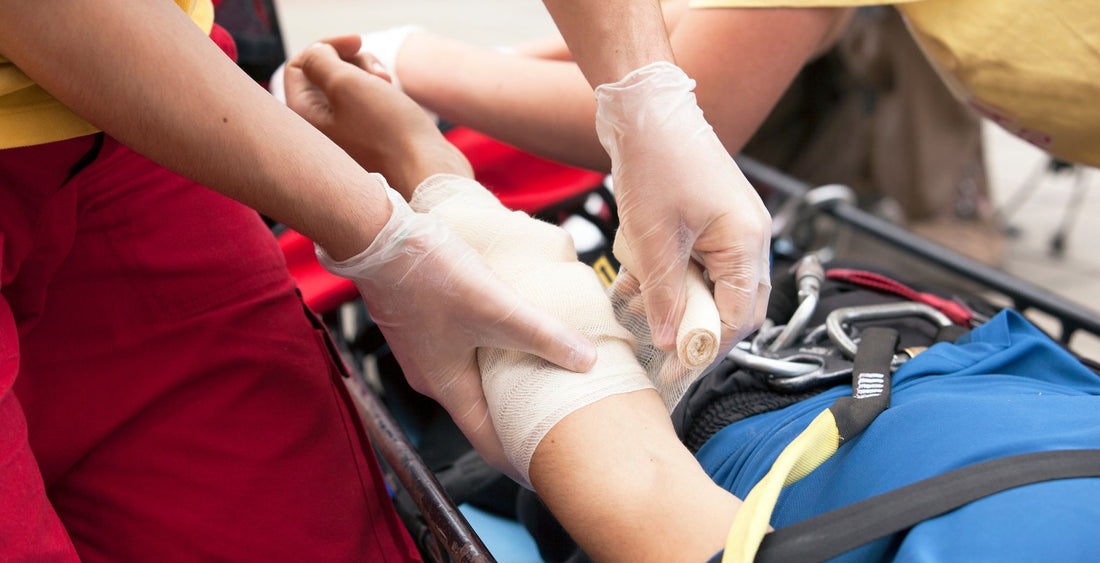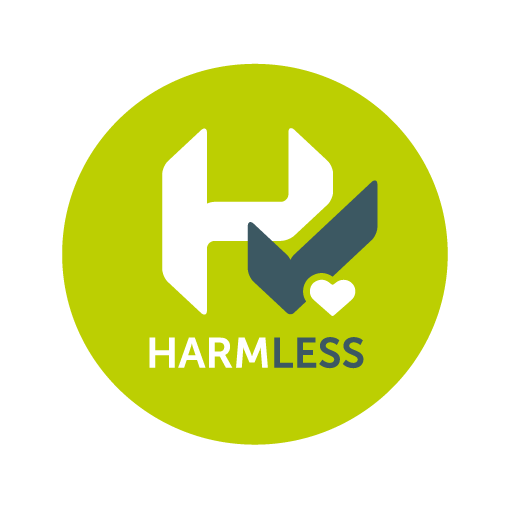
Understanding Fracture First Aid: Steps for Safe Recovery in New Zealand
Share
Understanding Fracture First Aid: Steps to Ensure Safe Recovery
Among the various injuries one can sustain, fractures rank high in terms of severity and discomfort. Understanding how to provide effective first aid for fractures is vital in ensuring a safe and speedy recovery.
Dealing with fractures can be challenging, but with the right knowledge and tools, you can provide essential care before medical help arrives. This brief guide will explore the necessary steps of fracture first aid, emphasising the products from Harmless NZ that can aid in the process.
Take a step back: Preventing fractures

Not all fractures are preventable, but many are. Here are some steps you can take to ensure your bones are as strong as they can be:
1. Exercise: Weight-bearing exercise is one of the best things you can do to maintain healthy bones
2. Eat a balanced diet: Include sources of vitamin D and calcium as well as eat lots of different fruits and vegetables
3. Avoid smoking
4. Limit alcohol and other drugs
Understanding Fracture First Aid

When faced with a bone fracture, regardless of its type, immediate action can significantly improve the recovery outcome. The steps taken in the initial moments post-injury can play a pivotal role in preventing further damage and reducing the risk of complications.
Let's take a closer look at the basics of fracture first aid, before we go into a little more detail covering the specifics of both open and closed fractures.
Basic Fracture First Aid Steps

When administering first aid for a fracture, following these crucial steps can make a significant difference in the victim's recovery process:
1. Assess the Situation: Before taking any action, assess the situation to ensure everyone’s safety including your own and the patient. Call for emergency medical services on 111 immediately if necessary
2. Stabilise the Fracture: Prevent any movement of the affected area by using products like splints and braces designed to immobilise the affected area and prevent further damage.
3. Control Swelling and Pain: Applying ice packs or cold compresses can help reduce swelling, alleviate pain, provide instant relief and help to minimise the potential for complications.
4. Cover Open Wounds: In the case of an open fracture, it's crucial to cover the wound with a sterile dressing to prevent infections by providing an effective barrier against harmful pathogens. This step helps to reduce the risk of further complications.
5. Elevate the Injured Area: Elevating the injured limb above the heart level can assist in reducing swelling and pain. Products like adjustable elevation pillows can provide the necessary support for this purpose.
6. Comfort and Reassure the Victim: Emotional support is as crucial as physical support. Ensure the patient remains calm and reassured while waiting for medical help.
Identifying Different Types of Fractures
Before going into the specific first aid steps, it's important to distinguish between the different types of bone fractures. This knowledge can help determine the severity of the injury and the necessary course of action. Common types include:
Closed Fractures: Immobilise and stabilise

Closed fractures are also known as simple fractures, and they occur when the bone breaks but doesn't penetrate the skin. These can often be less severe than open fractures but still require prompt and appropriate first aid to prevent further complications.
In instances of closed fractures, the initial focus should be on stabilising the injured area and reducing the risk of additional damage.
Key Steps for Closed Fracture First Aid Treatment

1. Immobilise: Using products like splints and bandages, gently immobilise the injured limb to minimise movement and prevent further harm.
2. Minimise swelling: Applying an Instant Cold Pack can help reduce swelling and alleviate pain. Remember to wrap the pack in a cloth to prevent direct contact with the skin.
Open Fractures: Addressing Critical Wounds

Open fractures, often referred to as compound fractures, involve the broken bone protruding through the skin, increasing the risk of infection and severe blood loss. First aid for open fractures demands careful attention to both the wound and the fracture itself to prevent complications and ensure a safe recovery.
1. Manage Bleeding: Apply direct pressure using a sterile dressing to control any bleeding. Avoid cleaning the wound excessively to prevent further tissue damage.
2. Prevent Infection: Use a sterile bandage to cover the wound, reducing the risk of contamination and protecting the exposed bone from external agents.
3. Greenstick Fractures: These are incomplete fractures, common in children, where the bone bends and cracks but doesn't completely break. They are a type of closed fracture and the first aid treatment is therefore the same.
4. Comminuted Fractures: These involve the bone breaking into multiple pieces, often requiring surgery for proper treatment. These types of fractures can be open, closed or both. They are generally the most serious and require medical treatment as soon as possible.
Seeking Professional Medical Help

While first aid is essential in the initial stages of managing a fracture, it's imperative to seek professional medical help for a comprehensive assessment and treatment. A medical professional can provide accurate diagnosis and recommend the most appropriate treatment, which may involve setting the bone, surgery, or other interventions. Only a qualified medical practitioner has the skills and resources to determine what treatment is appropriate and this is why it is important to seek further medical care after first aid has been applied in all instances where there is a suspected bone fracture.
Fracture First Aid: Ensuring Safe Recovery

The initial first aid measures are just the first steps in the journey to recovery from a fracture. Once the individual receives medical attention, there are additional steps to ensure a smooth recuperation:
1. Follow Medical Advice: Following your medical professional’s prescribed treatment plan, including medications and physical therapy, is crucial for promoting proper healing and preventing further injury.
2. Maintain a Healthy Lifestyle: Encourage a nutritious diet and sufficient rest to promote bone healing and overall well-being.
3. Physical Therapy and Rehabilitation: Engage in physical therapy exercises recommended by healthcare professionals aids in regaining strength and mobility.
4. Monitor Progress and Attend Follow-up Appointments: Regular follow-up appointments with healthcare providers help monitor the progress of recovery and address any potential complications.
Products for Fracture First Aid

Harmless.nz is dedicated to making fracture first aid more accessible to everyone in New Zealand. We offer a range of high-quality products that can be invaluable during emergency situations.
1. Fracture Splints: Our fracture splints are designed for easy application, ensuring proper immobilisation of the injured area.
2. Sterile Dressings and Bandages: For open fractures, our sterile dressings and bandages provide a hygienic solution for covering wounds and controlling bleeding.
3. Emergency Blankets: Emergency blankets are designed to keep patients warm and comfortable during the recovery period.
Conclusion
Accidents resulting in fractures can be distressing, but with the right knowledge and tools, you can effectively provide initial first aid, contributing to a smoother recovery process. By understanding the types of fractures and following the appropriate fracture first aid steps, you can ensure the safety and well-being of the injured individual. Remember, having access to reliable products, such as those from Harmless NZ, can significantly enhance the effectiveness of your first aid efforts. Be prepared, stay informed, and prioritise safety in every situation.
Disclaimer- The information provided in this blog post is intended as general information only. The content contained on this site is in no way intended as medical advice or as a substitute for medical treatment and we are not making any recommendations for any personal situation.
